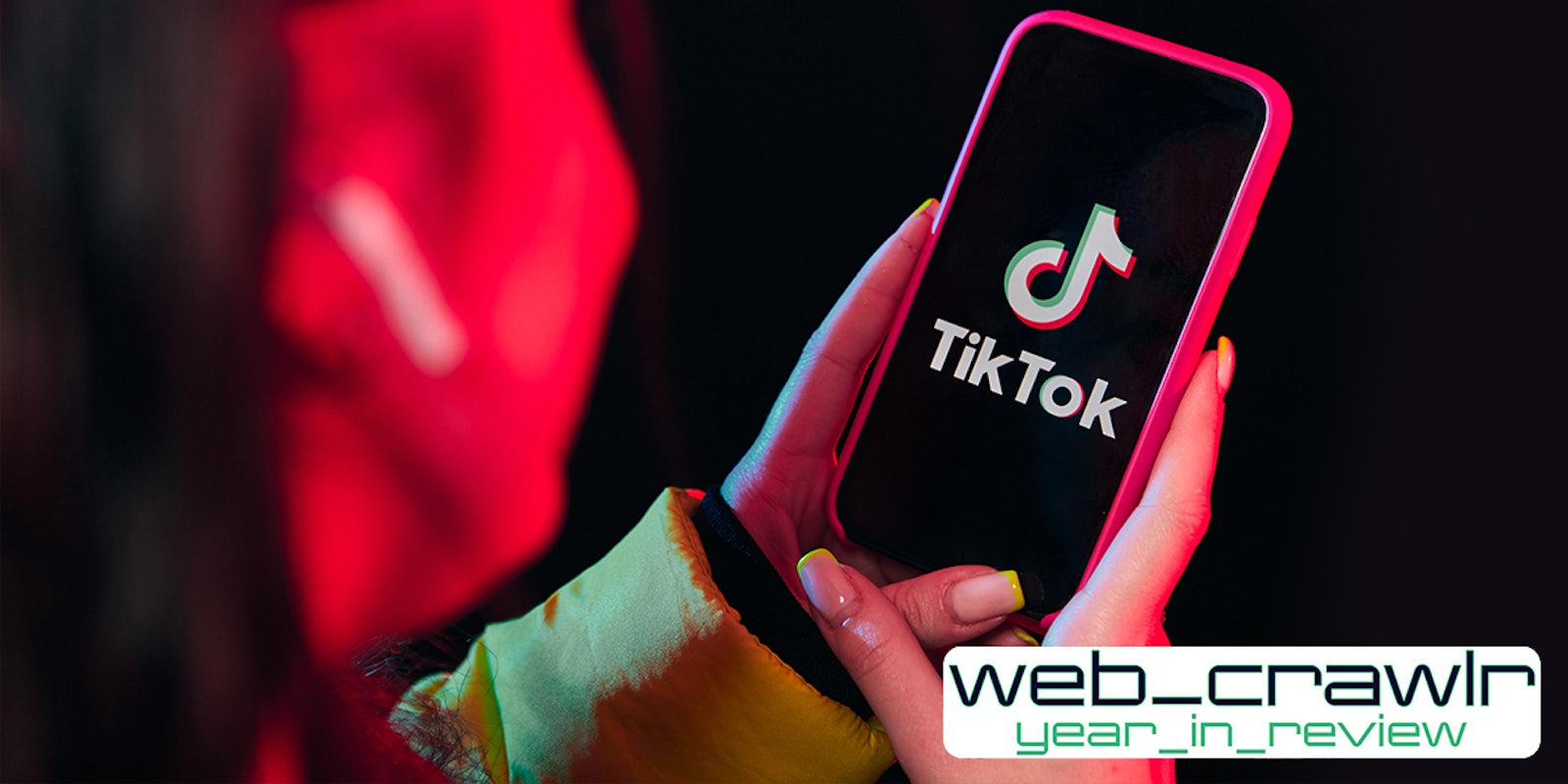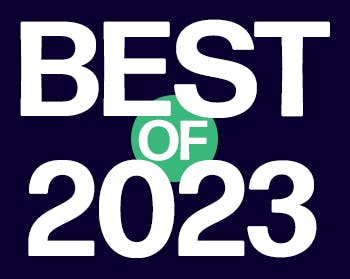
year_in_review
This list appeared first in the Daily Dot’s newsletter web_crawlr. Every week, our Senior Reporter Tricia Crimmins dives into the trends on TikTok that will make you cringe in her “Problematic on TikTok” column. If you want to see more content like this before everyone else, sign up for the newsletter here.
(In no particular order)
10) Blue collar wives share too much
In September, the wives of blue collar workers told TikTok and the internet far more than we would ever want to know about the dynamics of their marriages. For example, some of these women cut their husbands toenails, get peed on by them in the shower, and have to deal with their husbands blowing mucus out of their nose—presumably not into a tissue.
While this TikTok trend might seem harmless—what you put up with in your marriage is your business—at its core, it’s weaponized incompetence, or the intentional feigning of inability to avoid responsibilities. Like, if a man acts like he can’t cut his toenails, then someone will have to do it for him.
The other implication of the trend is in the TikTok audio that it was paired with: Loretta Lynn’s “You Ain’t Woman Enough (To Take My Man),” which seems to communicate that if you’re not allowing your husband to pee on you in the shower, you’re not a real woman.
9) Filming people with dementia
Some TikTokers found themselves in sticky situations in August after posting frequent videos of their loved ones with dementia. While the videos seemed well meaning and were endearing—it’s nice to know that elderly people with degenerative diseases are being adequately cared for—many commenters and others on TikTok wondered if filming people who aren’t operating with their full cognitive function isn’t fair or ethical.
8) Debate Me livestreams
There’s nothing more jarring than when you’re scrolling on TikTok and come across a live hosted by someone asking viewers to debate with them.
You know the kind I’m talking about: Where one person is seen sitting in front of text that says “Is being transgender just a phase?” or “Debate Me: LGBTQ+ rights are human rights.”
Sure, these types of livestreams get a lot of engagement and they might change a few hearts and minds, but they also attract people with transphobic and homophobic views and give them a large platform to share their harmful views. Dialogue is important, but it’s just not worth it when dialogue can be easily had offline and without a captive audience.
7) Divine Feminine TikTokers
Although the idea of the “divine feminine” as a spiritual concept has been around for a long time, the idea that there is a feminine, delicate energy source that exists in contrast to the masculine, powerful energy sources that dominates the world made a resurgence on TikTok this year.
Some divine feminine TikTokers want you to heal your inner trauma (which is a great idea), but some want you to allow the men in your life to have a leadership role so you can focus on being an emotional counterpart to them. The latter sounds a lot like separate spheres ideology, and pretty misogynistic—so watch these types of TikToks with a skeptical eye.
6) Straight girls insulting their exes by calling them lesbians
The joke goes a little something like this: A heterosexual woman says that she has been in a lesbian relationship before. You might think this means that she’s been in a relationship with a woman, but then she clarifies that she just dated a man who was “a bitch.”
Homophobia is always unnecessary, but this is unnecessarily homophobic on a whole new level.
Why were straight women roping in the lesbian community to make fun of their exes? Why were they putting down our relationships, even though we had nothing to do with their “bitch” male exes? Why were they indicating that relationships between two women are actually just relationships between a woman and a bitch (or, two bitches)? None of it made sense.
5) Manifestation TikTok audios
Remember those “haunted” chain e-mail messages from about 15 years ago? The ones that would claim that if you didn’t forward the e-mail to ten people, Bloody Mary—or some other frightening, other-worldly entity—will come into your house at midnight and kill you. Well, they’ve taken a new form and are now manifestation TikToks.
Essentially, manifestation TikTok audios claim that if you use specific sounds in your videos on TikTok, you will receive money or your crush will text you. Some audios even claim that if you don’t use them in your video, bad things will happen to you. Sound familiar?
“These trends are so incredibly damaging to young impressionable minds,” one TikToker said of manifestation audios. “Nothing is going to magically happen.”
4) Death Row Meals
There are many ways you can phrase explaining what your favorite meal would consist of: Your ideal meal, a meal with all your favorite foods, the best meal. What you don’t have to—and shouldn’t—call it is your “death row meal.”
In January, TikTokers shared their “death row meals,” or what their last meal would be before execution, if they were to be executed. The problem is, though, most (if not all) of the TikTokers who did this trend were not on death row.
As explained in a video about the trend from @ngozimusa, “people of color have accounted for a disproportionate 43 percent of executions since 1976.” And because many of the TikTokers who participated in the trend were white, the trend was seen as tone deaf and insensitive.
3) Girl Dinner
A lot of people had fun with “girl dinner” this year—but unless your girl dinner included enough food to fuel and nourish your body, girl dinner seemed a lot like disordered eating.
Girl dinner is essentially assembling a charcuterie board of items that you’re craving (or just that are in your fridge) as a meal. Examples include crackers with salami, strawberries, and guacamole, or crostini with tomatoes and cheese. One woman even shared that she eats homemade Lunchables as her meals as part of the girl dinner trend.
It’s better to eat a cobbled together meal of snacks than nothing at all, but it’s best to eat a full meal that will sustain you throughout the day. And it’s even better to be careful who you’re taking nutritional advice from on TikTok.
2) Discriminatory AI filters
AI is biased, and the way those biases surface is in the ways people with marginalized identities are portrayed in AI generated content—or, not portrayed at all. And as I’ve explored in my column, “Problematic on TikTok,” TikTok filters are biased, too. Many of them are fatphobic, and some don’t work as well on people of color.
In November, an AI-based filter that purports to turn users’ likenesses into a studio portrait from the 1940s was trending on TikTok. But some TikTokers pointed out that it was whitewashing people of color and thinning plus-size and fat creators. And just a month before, fat creators showed how another AI meme-making filter was making fat jokes about them.
1) TikTok singers (secretly) using autotune
Just like you can use filters to enhance or change your physical appearance on TikTok, you can also “filter” your singing voice to sound better—and that’s what many well-known TikTok singers have been doing to get their seemingly impromptu singing videos to sound so angelic.
Thanks to singer Glenn Devron, these auto-tuning singers’ methods have been exposed: In a November TikTok, Devron showed how he can upload a video of himself singing (well or poorly) to a tuning software and can re-tune the video so that he sounds perfect. Then, all he has to do is upload the video to TikTok.
Many TikTok singers thanked Devron for his transparency, and his videos proved that most aspects of videos that we see can be edited and filtered. So don’t feel bad if you don’t look or sound like someone on TikTok, they might not either!




